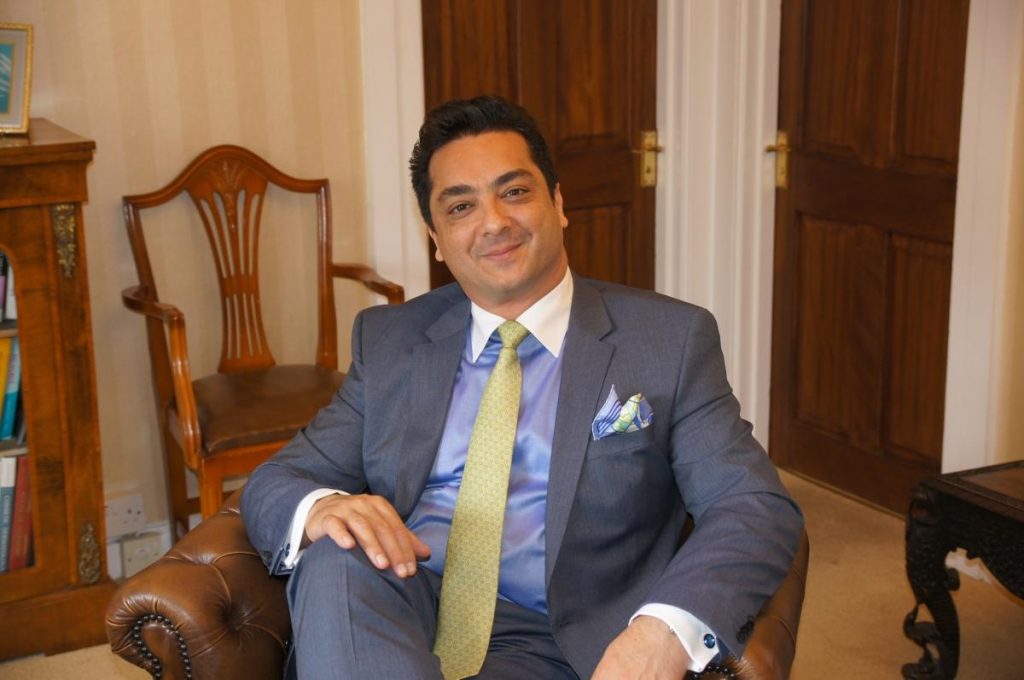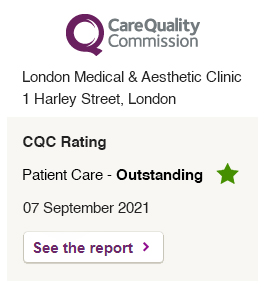Over the last decade, there has been an increase in the fraction of men undergoing cosmetic and aesthetic treatments as more and more of them succumb to the desire to imitate the looks of celebrities or to maintain a youthful appearance.

Botulinum toxin has appeared as a remarkably favourite with male patients, with clinics reporting a year-on-year upsurge of up to 40% in the wrinkle-busting treatment. Reasonably unsurprising, owing to the non-invasive nature and comparably moderate cost of botulinum toxin injections.
However, men in the UK have been seeking more surgical procedures as well. Practitioners observe that men now make up a greater proportion (around 20 to 25%) of their total patient group than ever before. They tend to choose botulinum toxin treatments to look revitalised, fresher and more youthful.
Dr Ayham Al-Ayoubi explains, “Gender is an essential factor not only in what treatments men seek and the results they expect but also in how effective the treatments are.” Larger skulls, greater muscle mass, the higher density of facial blood vessels, and deeper rhytides (compared with women) affect how men respond to botulinum toxin injections.
A 2013 analysis of clinical studies in the treatment in men reported that botulinum toxin is less efficient in males and that higher doses are needed to achieve desired results than are typically used to treat women. Concerning the results men want to be able to see a definitive change in themselves, and for others to see an improvement, but without people knowing they’ve had work done.
In other words, men prefer to have lines and wrinkles, but shallower and less evident. Practitioners characterise male patients by the factors that prompt them to have facial contouring; broadly, to compete in the workplace, to attract a partner, and to boost their self-esteem.
In many aspects of life, attractiveness is directly proportional to success and accomplishments; for example, attractive people have more dates, are perceived to have positive personality traits, and are more likely to be successful in job interviews.
Attractiveness is mostly a subjective measure, and this is reflected in what male patients request. Younger male patients frequently seek outcomes more skewed towards a feminine look, because they are influenced by metrosexual imagery and social media.
However, practitioners report that a key factor when treating men is to avoid over-feminising the face, often preferring to masculinise features.
Equally important is to avoid excessively masculinizing the face, which can produce unnatural results and elicit unwanted reactions, driven by social ideals and perceptions. Overdoing male facial contouring, such as creating an excessively large chin, cheekbones, and jaw angles, can result in poor aesthetic results and harsh features — features that are linked to aggressive behaviour.

Dr Ayham, Al-Ayoubi: Interestingly, a recent study into ideals of male attractiveness found differences between what men and women desire: women prefer a softer jaw, slimmer face and fuller lips in men while men tend towards a traditionally masculine look.
Scientific research supports these findings, suggesting that morphological masculinity bears less influence on men’s attractiveness than has historically been presumed.
When employing non-surgical methods, there are a three-part solution, comprising:
• Botulinum toxin around the eyes or as part of a Nefertiti lift to contour the jowls and jawline.
• Short-lasting hyaluronic acid fillers and fat grafting.
• Mechanical interventions, mainly involving a fractional CO2 laser and high-intensity focused ultrasound (HIFU).
Male and female patients undoubtedly have diverse needs when it comes to facial contouring. Their aesthetic concerns and desired outcomes are driven by different influences, and as a result, practitioners must approach the genders accordingly. “Whatever an individual wants to achieve with facial procedures and treatments, the overarching principle is to manage their expectations appropriately — regardless of gender,” says Dr Ayham Al-Ayoubi.





